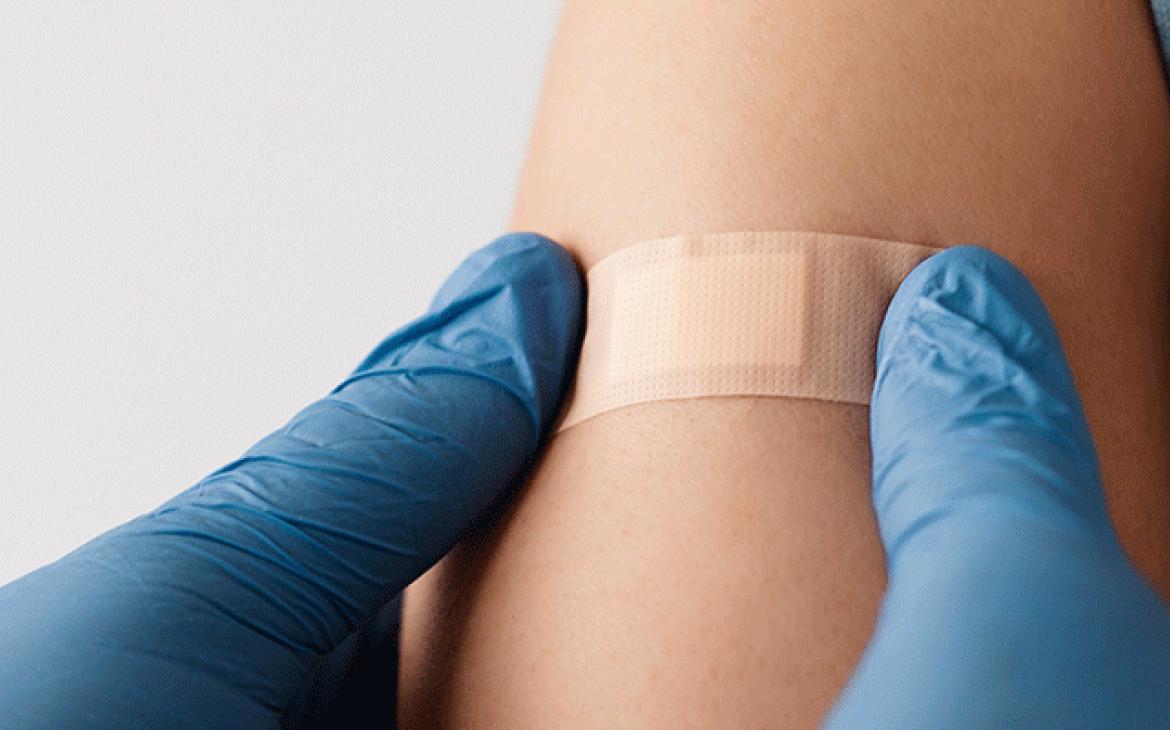
Before COVID-19, most people might vaguely remember messenger RNA (mRNA) from a high school biology class; in-depth knowledge was the realm of professors and scientists. But thanks to the vaccines developed to fight the pandemic, mRNA, specifically mRNA vaccines, has become a topic of public interest. Non-scientists want to understand what mRNA vaccines are, how they work and whether they should trust them.
What is mRNA?
To understand how mRNA vaccines work, it’s necessary to understand a little about what mRNA does in the body.
All cells have DNA which contains the information a cell needs to live and function. Many of those functions require proteins. To make those proteins, the information that’s in the DNA must get to the cell’s protein-making machinery. mRNA brings the information from DNA to the cell’s protein-making machinery (the “m” in mRNA is for messenger) and tells it what kind of proteins need to be made.
How do mRNA vaccines work?
mRNA vaccines use mRNA’s function as a protein information carrier to prompt the body to make specific proteins. In the case of COVID-19 vaccines, the mRNA instructs the cells to produce the spike protein found on the outside of the SARS-CoV-2 virus. When the body’s immune system detects these foreign proteins, it produces antibodies and other immune cells to fight what looks like an infection. Then, if the immune system encounters that protein again in the future (an actual SARS-CoV-2 virus infection, for example), it’s primed to mount a rapid response.
How are mRNA vaccines made?
To make an mRNA vaccine, scientists must first identify a protein on the outside of the virus that the body’s immune response will respond to (the “target” protein). The protein they choose must be sufficiently different from proteins on the outside of the body’s own cells, so the immune system only attacks the virus. They then identify the DNA that has the information for making the target protein. Scientists use the DNA to produce the mRNA for the target protein. Once enough mRNA has been made, the DNA is broken down to ensure that only the mRNA is packaged in the vaccine. The speed and efficiency of this process can make large amounts of mRNA in a short period of time.
mRNA is a fragile molecule, so it is “wrapped” in a fat-based coating to protect it. Other ingredients are added to the vaccine to keep it stable and make sure the vaccine behaves as it should in the body. After packaging, the vaccine is stored and shipped at very low temperatures to help keep the mRNA intact and the vaccine safe and effective.
Are mRNA vaccines safe?
All vaccines, including mRNA vaccines, undergo rigorous quality control and quality assurance protocols to ensure their safety and efficacy. Quality testing is integral to the development and manufacturing processes. Data from these quality tests are submitted to the FDA for review before a vaccine is made available to the public. After a vaccine is approved, both the Centers for Disease Control and Prevention and the FDA continue monitoring its safety. Due to the public health emergency that was declared because of the COVID-19 pandemic, the COVID-19 vaccines were first authorized for emergency use. Additional data was reviewed before any mRNA vaccines were approved by the FDA.
mRNA vaccine technology is relatively new and little regulatory guidance is available regarding product characterization and quality control. Companies developing and manufacturing mRNA vaccines must design their own analytical testing strategies that identify, measure, and control for the attributes of the vaccine, to make sure their products are consistently safe and efficacious. Developing in-house quality assessment strategies requires time and resources that might otherwise be invested in the advancement of new therapies.
A standard set of analytical methods can support vaccine developers, manufacturers, regulatory agencies, and national control laboratories worldwide. As manufacturers around the world look to harness the power of mRNA technology, such methods can help support the development of safe and effective vaccines using this platform.
Together with a group of leading vaccine experts, USP has assembled a set of draft guidelines with analytical procedures and best practices to support quality assessment of mRNA vaccines and therapies. To refine these draft guidelines, USP invites industry, academic, and government experts with experience or interest in mRNA vaccines and technology to provide feedback on the methods and recommend additional information to support the understanding of mRNA quality.
For more information about tools that help safeguard quality and build trust in innovative products like mRNA-based therapies, please visit https://www.usp.org/mrna.


